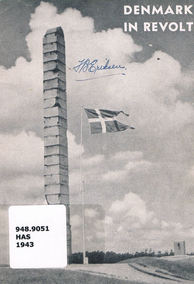Public diplomacy
|
To support Denmark’s reputation and future independence, Danish-Americans worked in the fields of public diplomacy and media relations to win the hearts and minds of the American public. The general American perception of Denmark as an allied country improved around 1943 when Denmark began to more actively resist the German occupation.
|
|
The New York City-based organization American Friends of Danish Freedom and Democracy was founded the day after Denmark surrendered to the Germans. As the American news media focused on Norway’s heroic fight, some Danish-Americans felt the need to create an organization to monitor, inform and influence American public opinion to support Denmark. A small group of private individuals of means initially funded the organization which was led by Danish-American Caspar Hasselriis with assistance from Edward L. Bernays, a pioneer in the field of public relations. The organization quickly achieved the support of 150 prominent Americans who publically stated their support for Denmark.
Hasselriis writes about the work of the American Friends of Danish Freedom and Democracy in the first days: “It is not an overstatement to say that it was difficult … There were no dramatic events to highlight; they happened much later. Many things we had to keep quiet about so people would not think that the Danes were docile friends of the Germans.” Initially, the organization focused on providing facts and highlighting Denmark’s long-term reputation as a democratic and cultured country. After the conflict in Denmark intensified in 1943, events such as the increase of the activities of the Danish resistance movement, the spontaneous general strikes, and the escape of the Danish Jews from Denmark to Sweden heightened the media’s attention to Denmark. In 1941, the organization changed its name to Free Denmark, Inc. and began working in close cooperation with The Danish Council in London and “free Danes” worldwide. From 1942-1944, it worked under the auspices of the National America Denmark Association as Friends of Denmark until it became an independent organization again when the National America Denmark Association joined The National War Fund. |
Examples of activities of American Friends of Danish Freedom and Democracy and its successors :
|
Sources:
Axel Sporon-Fiedler, Den danske bevægelse i de forenede stater i besættelsesårene: en kort redegørelse af Axel Sporon-Fiedler [The Danish movement in the United States during the years of the occupation: A brief account of Axel Sponron-Fiedler] ([Publisher unknown], 1947).
Caspar H. W. Hasselriis, Danmark i USA under Besættelsen [Denmark in the USA during the Occupation] (Copenhagen, DK: Forlaget Sixtus, 1978).
Axel Sporon-Fiedler, Den danske bevægelse i de forenede stater i besættelsesårene: en kort redegørelse af Axel Sporon-Fiedler [The Danish movement in the United States during the years of the occupation: A brief account of Axel Sponron-Fiedler] ([Publisher unknown], 1947).
Caspar H. W. Hasselriis, Danmark i USA under Besættelsen [Denmark in the USA during the Occupation] (Copenhagen, DK: Forlaget Sixtus, 1978).
